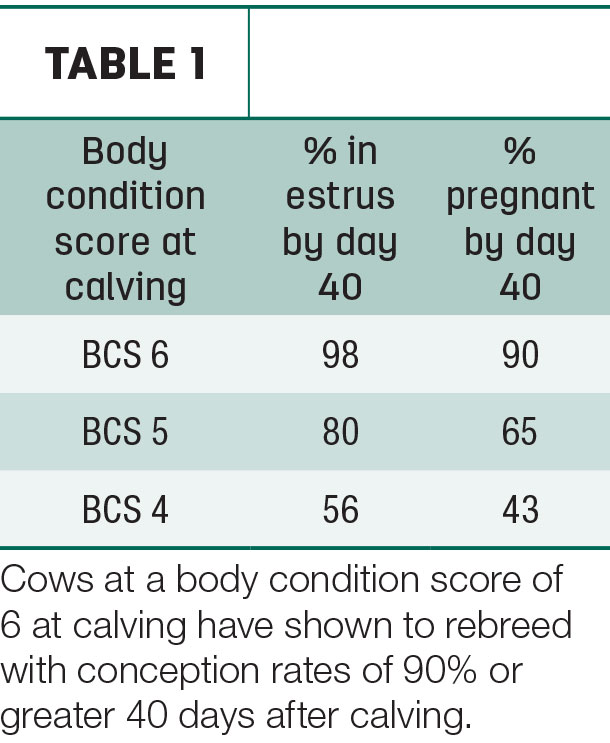If you’ve ever set up dominos, you know that when one domino falls over, the rest follow suit. Similarly, your nutrition program can set off a chain reaction affecting your breeding program.
With poor nutrition, a cow might take longer to breed back, or she might not conceive at all. The longer a cow stays open, the more money you’re losing on her. If a cow on lower-quality nutrition does rebreed, she could have trouble calving, and difficult calving could mean the calf is not as thrifty.
Another domino in the chain is colostrum production. An undernourished cow might not have the nutrients needed to produce high-quality colostrum. Low-quality colostrum doesn’t provide newborn calves with the same vital benefits as high-quality colostrum – benefits that last well beyond birth.
High-quality nutrition supports a productive breeding season, and the domino effect only snowballs from there.
Use body condition as the barometer
Body condition is a good barometer of your nutrition program and what your reproductive success might be. There’s an enormous amount of data that shows cows managed for a body condition score (BCS) of 6 at calving rebreed with better conception rates than cows calving in a lower BCS. See Table 1.
 Monitoring cow body condition scores often and during critical times, like calving and rebreeding, can help you determine your herd’s nutritional needs in real time. Playing catch-up can be costly; cows at a BCS of 3.5 at calving need to gain upwards of 3 pounds per head per day to be at a BCS of 5.5 before breeding, which is difficult to do in most real-world conditions.
Monitoring cow body condition scores often and during critical times, like calving and rebreeding, can help you determine your herd’s nutritional needs in real time. Playing catch-up can be costly; cows at a BCS of 3.5 at calving need to gain upwards of 3 pounds per head per day to be at a BCS of 5.5 before breeding, which is difficult to do in most real-world conditions.
Tighten up the windows
Cows must be bred within 85 days after calving to have one calf per year. It’s simple math. If a cow doesn’t produce a calf every year, she costs you money.
Say you’ve got a cow that calves in March this year; then she calves in April next year; and she calves in June next year. She’s not calving every 365 days and will eventually leave the herd because at some point she’ll begin cycling after the bull is pulled out.
A tighter breeding season also prepares cows for a shorter calving window, which has an additional economic benefit. A 60-day calving window can provide a more uniform calf crop, heavier calves and, ultimately, more pounds to sell.
A 60-day calving window might seem like a lofty goal, but it can be achieved with the proper balance of management, genetics, nutrition and health.
Set off the right chain reaction
The “right” nutrition looks different for every operation, but I recommend a year-round mineral and protein supplementation program. Year-round, high-quality nutrition can optimize conception rates, calving windows and produce more calves on the ground, quicker.
The reality is forages are not consistent throughout the year. When forages are dormant, quality declines. Early-season, immature forages also provide lower quantity nutrition.
Forage type, quality and seasonality all contribute to volatile nutrition. Steady mineral and protein supplementation throughout the year essentially serves as an insurance policy to protect your cows from nutrition gaps.
The long-term payoff of consistent and high-quality nutrition is extended herd longevity. Cows stay in the herd longer when they breed back and perform.
It’s challenging to avoid culling older cows that eventually drop in performance, but you can avoid culling your young cows. You’ve likely invested significantly in your young cows, but if you can get them bred, you’ll have a better chance to recoup costs, keep fresh genetics in the herd and increase the average age of the cow herd.
For more tips to improve your breeding program, visit Purina Animal Nutrition - breeding.
References omitted but are available upon request. Click here to email an editor.







